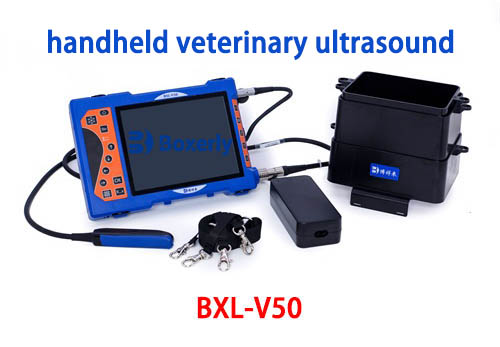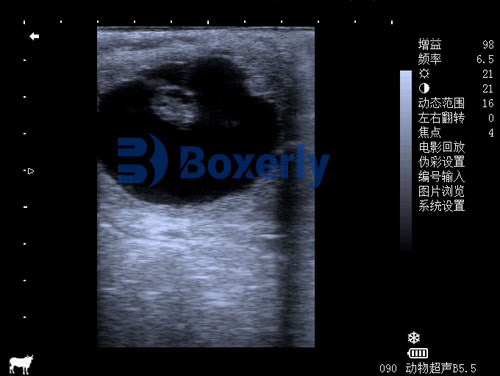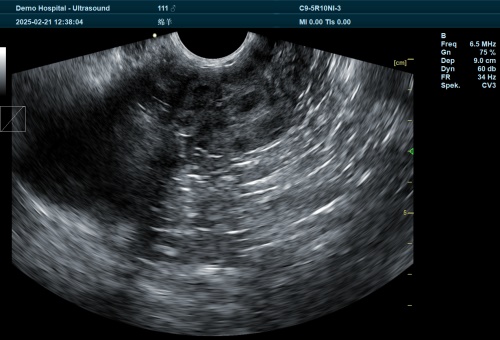Ultrasound technology has revolutionized medical diagnostics across the globe, becoming a fundamental tool in both human and animal healthcare. As ultrasound machines become more advanced and widely available, questions about their cross-disciplinary usage have surfaced. One such query that frequently arises is whether a Veterinary ultrasound machine can be used on humans. While on the surface it may seem like a practical or cost-saving measure, the reality involves a web of technical, ethical, and regulatory considerations. This article explores this question through the lens of technology, global medical standards, expert opinions, and ethical implications, culminating with the role of BXL as a leader in veterinary ultrasound.

Understanding Ultrasound Technology
To explore the feasibility of using Veterinary ultrasound Equipment on humans, it's essential to first understand how ultrasound works. Ultrasound machines function by emitting high-frequency sound waves into the body. These waves bounce off internal structures and return to the transducer, creating a visual image of tissues, organs, and vessels in real time.
The core principles remain the same regardless of whether the subject is a cat or a human. However, the calibration, transducer frequencies, imaging modes, and software optimization differ depending on the species, body size, and medical requirements.
Similarities Between Veterinary and Human Ultrasound Machines
At the basic level, both human and veterinary ultrasound machines use the same type of hardware: probes (transducers), control units, and monitors. Some entry-level models even share manufacturing lines, especially in the case of portable ultrasound devices. The foundational software may also be similar, with modifications made to adapt to different anatomical references and common diagnostic needs.
Foreign practitioners in both Europe and North America have noted these overlaps. For instance, Dr. Elizabeth Branscombe, a sonographer in the UK who has worked in both veterinary and human clinics, once stated: “Many budget ultrasound machines in general practice, particularly in rural areas, are modified versions of human systems adapted for animal use. The reverse is technically possible but not advisable for routine diagnostics.”
Differences That Matter
Despite the similarities, significant differences make veterinary ultrasound machines less suitable—and potentially unsafe—for human use. These differences include:
1. Calibration and Imaging Profiles
Veterinary ultrasound machines are calibrated for various species, from dogs and cats to horses, cows, and exotic animals. Human ultrasound machines, by contrast, are tailored specifically for human tissue density, organ structure, and diagnostic needs. Misalignment in calibration can lead to inaccurate images and, consequently, misdiagnosis.
2. Transducer Frequency Range
Veterinary machines are often built with more variable frequency ranges to accommodate different animal sizes. For example, a transducer that can penetrate a cow’s abdomen is vastly different from one meant for human fetal imaging. Using the wrong probe can result in poor image quality or even unnecessary exposure to high-intensity sound waves.
3. Regulatory Compliance
In countries such as the United States, Canada, Germany, and Australia, medical devices for human use are subject to strict regulations from organizations like the FDA (Food and Drug Administration) or EMA (European Medicines Agency). Devices not approved for human diagnostics may not meet safety standards, leading to legal liability or loss of licensure for practitioners.
4. Software and Reporting Tools
Human ultrasound machines are often integrated with electronic health record (EHR) systems and diagnostic software tools that help analyze results, store data, and ensure continuity of care. Veterinary devices may lack such integrations, or have software geared toward animal physiology, which doesn’t translate well to human metrics.

BXL-V50 Veterinary ultrasonic Device
International Perspectives
1. United States
In the U.S., using non-FDA-approved devices on humans is strictly prohibited in clinical settings. However, in academic research or veterinary crossover training programs, vet ultrasound systems may occasionally be used to simulate procedures on models or for educational comparison.
2. Europe
In countries like Germany and the Netherlands, there’s a growing emphasis on the ethical implications of cross-use. European medical ethics boards generally discourage using veterinary equipment on humans unless under highly controlled experimental conditions.
3. Asia
In some rural areas of India or Southeast Asia, where resources are limited, crossover use has been reported. However, this is usually a result of necessity rather than best practice. Healthcare NGOs working in these regions emphasize the importance of eventually upgrading to human-approved equipment.
4. Africa
In parts of Sub-Saharan Africa, where veterinary services often outpace human healthcare in rural regions, makeshift cross-use is more common. However, global health organizations like the WHO are actively working to improve access to human-grade medical imaging devices to reduce this dependency.
Ethical and Legal Considerations
Even if a veterinary ultrasound machine is technically capable of producing images from a human body, the ethical and legal consequences of using such equipment are non-trivial. Misdiagnosis due to species-inappropriate imaging presets or failure to meet regulatory standards could lead to harm, legal repercussions, and damage to professional reputations.
Furthermore, using veterinary machines on humans can erode patient trust. Informed consent becomes murky when the equipment in question was never intended for human diagnostic purposes.
Emergency and Non-Medical Use Cases
There are niche scenarios where using a vet ultrasound machine on humans might be deemed acceptable—primarily in emergency or non-diagnostic situations. For instance, survivalist medical training courses may use vet machines for demonstration purposes. Similarly, they may be used in remote disaster zones temporarily while awaiting proper medical equipment. In these cases, the priority is life-saving or educational rather than clinical accuracy.
However, these are exceptions, not rules.

Why Use a Dedicated Veterinary Ultrasound?
Given all of the above, it’s clear that veterinary ultrasound machines are best reserved for their intended purpose—animal diagnostics. The manufacturers, features, and support structures are all geared toward veterinary professionals and their unique needs.
Veterinary imaging requires a different level of flexibility and robustness. Vets often work in unpredictable environments, from farms to zoos to clinics that see everything from reptiles to rodents. This makes specialized veterinary equipment not just preferable, but essential.
Conclusion: Stick to the Right Tool for the Job
While it might be technically possible to use a veterinary ultrasound machine on a human in very specific and controlled circumstances, doing so is rarely advisable. The differences in calibration, safety standards, software, and regulatory compliance create a landscape where cross-application is fraught with risks.
Foreign experts and institutions generally agree: medical tools should be used for their intended purpose. When dealing with human lives, accuracy and safety must take precedence over improvisation or cost-saving.
That’s why BXL has focused its innovation, research, and manufacturing excellence solely on veterinary ultrasound solutions. As a professional company specializing in veterinary imaging, BXL understands the complexity of animal diagnostics and provides tailor-made equipment designed to deliver precision, portability, and reliability in all animal healthcare settings. By staying true to the veterinary field, BXL ensures that both pets and livestock receive the best diagnostic care possible—without compromising on quality.
link: https://www.bxlimage.com/nw/1181.html
tags:








